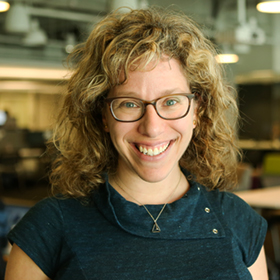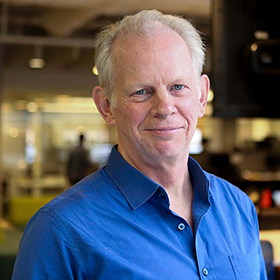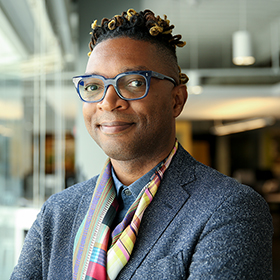There is a growing recognition across place-based funders that they can use the privilege and power they hold—as well as their proximity to regional public and private sector power brokers—to amplify power in under-resourced communities. Their logic: communities stand a better chance of achieving just and equitable, enduring solutions to stubborn social challenges that have long eluded quick fixes when they have the resources to realize their aims. So what are funders doing to authentically build power in the communities they serve—especially Black, brown, Indigenous, and other communities that have been structurally held back from realizing their full potential?
The 12 peers in the place-based funders learning group who gathered together in 2020 are helping under-resourced communities act as their own agents of change. They are leaning into this shift by supporting Black, Indigenous, and people of color (BIPOC) leaders of organizations serving BIPOC communities through flexible funds and professional services, indirectly or through intermediaries, and by supporting grassroots groups. As Takema M. Robinson, founder and principal of the New Orleans-based Converge for Change and a member of the Greater New Orleans Funders Network put it, “Organizing and power building is almost the only answer to the current crises. Power building is an emergency response.”
Flexing dollars, providing professional services, investing in leaders
While several funders in the learning group had long used some forms of flexible funding, the pandemic and the creation of new strategies that focus on equity pushed them to pilot ways to flex even more of their funding.
The first step for many is to provide multiyear general operating dollars. Several pointed to MacKenzie Scott’s series of large, unrestricted grants, which began in 2020[1], to primarily BIPOC-led and BIPOC-serving organizations. “That has caused not just a ripple, but a three-ton boulder fell into the pond and the waves are reverberating,” said one funder. “[These gifts] are a kick in the ass to us in a good way. To just get the money out the door, and let the grantees decide what to do. Focus on BIPOC-led orgs and institutions of color. And to not be so cautious.”
The funders in our group recognized that for all the talk of flexible funding, practice hasn’t caught up with the rhetoric. A report from the Center for Disaster Philanthropy and Candid that tracked philanthropy’s total pandemic-related giving across 2020 highlighted this eye-opening fact: “Excluding [MacKenzie Scott’s] grantmaking, flexible support reflected only 9 percent of all dollars awarded to named recipients [up from 3 percent the prior year].”
One funder in our group asked: “Even when we give multiyear general operating dollars, we limit them to 10 percent of the organization’s budget. Why don’t we give organization-changing grants?”
This paradox about who is fundable is the manifestation of choices we made that are rooted in white supremacy—that white leaders are better leaders. ... Over time that becomes true because we have funded it to be true.
Reflecting on Scott’s outsized, BIPOC-focused giving, Converge for Change’s Robinson lamented the fact that it is still so rare. “How fundamentally racist is it to say that we’re not going to fund Black-led orgs closest to the ground because they don’t have capacity, when we intentionally underfunded them? It’s on us. This paradox about who is fundable is the manifestation of choices we made that are rooted in white supremacy—that white leaders are better leaders, that they make better organizations. Over time that becomes true because we have funded it to be true. We have to flip the script from putting the onus on organizations that we have continuously underfunded.”
{^widget|(path)%2fPersona-Widget-Content%2fRace-and-Place-based-Philanthropy%2f%2525|(name)BSG.PersonalizedCard|(tileposition)right|(widget_displayname)*+Personalized+Card|(width)|(height)^}One potential pathway for “flipping the script” came from Ryan Palmer, director of the A. James & Alice B. Clark Foundation’s Washington, DC community initiatives. She described the value of providing multiyear supports that grantees seek. Much more of her work with grantees can then consist of advising, brokering relationships, and helping to think through strategy. “There’s a very different stance you get to have with grantees when you can say, ‘The multiyear funding is a given here. Now, how can we be partners?’”
By viewing grantees as teammates, she can have conversations about sticky issues like winding down a struggling program, so it’s “not viewed as a negative when it happens.” Those kinds of program decisions are best made when they are not tied to funding decisions. Several grantees have sought infrastructure investments, such as to enhance their ability to harness direct-from-the-neighborhood data. One of Clark’s grantees, a DC-based food bank, produced heat map data that reported and predicted food insecurity at a hyper-local level. When COVID-19 hit, the food bank was able to share its data with municipalities and help drive public-funding decisions to better respond to the needs of neighborhoods.
Andrea Sáenz, chief operating officer of The Chicago Community Trust (The Trust), also spoke to the importance of complementing general operating grants with professional services, such as measurement and learning, data infrastructure, and strategic planning. She also proposed shifting from a deficit mindset to an asset mindset, where professional services are viewed as ways to upgrade instead of correct.
“It strikes me that what we call ‘capacity building’ for small organizations is the same kind of professional services we regularly engage for our own improvement, and we simply call it ‘procuring professional services.’ We need to normalize that all organizations bring in professional services to improve a particular area of their work,” Sáenz said.
The Kendeda Fund also works to build trust-based relationships by awarding unrestricted grants and devoting more time to “talking about moving the work, versus talking about the details of the grant,” said Tené Traylor, the organization’s fund advisor. “I’m leading a portfolio on criminal justice and the dignity of work, so I’m asking questions such as, ‘What policies have you moved? How is the narrative shifting?’ It’s less about how they operationalized the funds and overhead.”
For her, building these relationships means understanding what actors are best prepared to make the necessary shifts. “You have to be in these relationships and conversations because you often have to pivot,” said Traylor. “You might need to add, reduce, shift, or get a different kind of partner to make the work happen.”
I think that’s what you do as a funder. You let leaders lead.
In fact, The Kendeda Fund is increasingly investing its unrestricted funds in leaders more than institutions. Kendeda’s logic: exceptional leaders are best positioned to make real progress. In 2018, Traylor supported efforts to reinvigorate democracy in the state of Georgia. Instead of investing in institutions that had worked for many years to turn out historically underrepresented voters in Georgia—institutions that accomplished less than many Georgians had hoped for—Traylor funded ProGeorgia, largely because of its new executive director, Tamieka Atkins.
“When Tamieka came on board, two things stood out,” said Traylor. “She had reputational capital and she was a values-aligned African American woman leading an organization that had such implications for voter turnout. We provided significant unrestricted capital. And she did exactly what she said she’d do. Getting out of the way was the best thing we could have done.
“I think that’s what you do as a funder,” Traylor added. “You let leaders lead.”
When Silicon Valley Community Foundation (SCVF) conducted a series of town hall meetings with community leaders and residents, the community’s feedback pushed SVCF to ensure that its funding goes to grassroots organizations trusted by BIPOC communities, without regard to a specific issue area or field of focus, such as education or public health. The logic: by remaining “issue agnostic,” SVCF frees itself to pursue a greater array of opportunities to help BIPOC-led groups scale their impact. The priority is to fund BIPOC-led organizations trusted by the communities they serve, giving them the space to focus on what they think can most make a difference in the lives of their constituents.
Nevertheless, some of the peer funders spoke of the constraints they run into, as they consider flexible approaches. In hearing about SVCF’s issue agnostic philosophy, other colleagues noted that given their defined program areas, they do not have the flexibility to push past their fields of focus. Another funder wished that their organization could fund leaders rather than issue areas, as The Kendeda Fund has done. This funder cited an individual who leads her own organization and is a cofounder of the Movement for Black Lives as “the perfect example. She’s a once-in-a-generation leader who has helped start a worldwide movement. Can’t there be a way to fund her? Can’t we just fund people?”
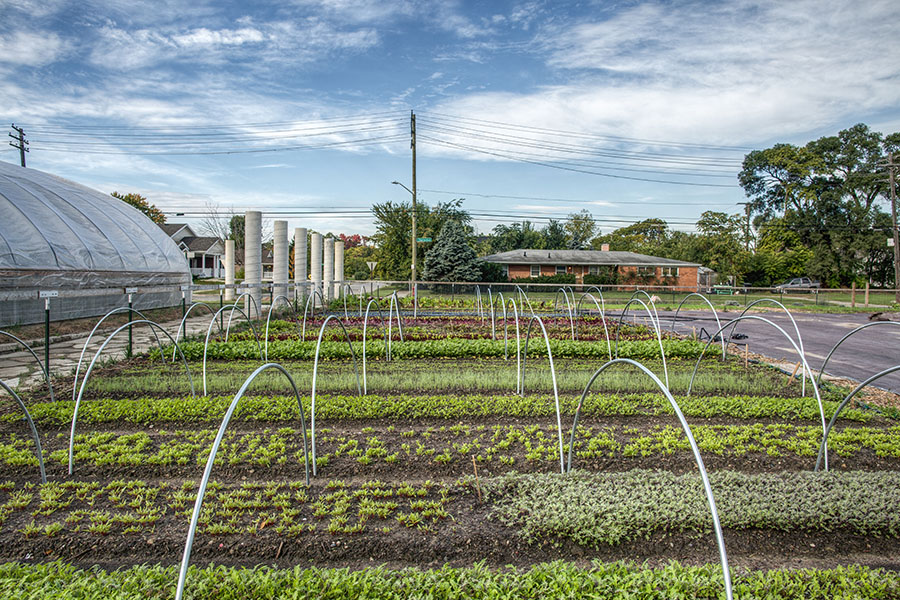
Supporting communities through intermediaries
Participants shared that they don’t always have a close sense of the organizations most valued by community members. There are also times when they lack a close-up understanding of the power differentials that prevent close partnerships. In these circumstances, they have worked with intermediaries that have long-standing relationships with those communities they seek to benefit. That way, the intermediary can take on some of the heavy lifting, in partnership with the funder, of sourcing and investing in grassroots organizations that the community trusts and values.
Such was the case when the Kresge Foundation’s Detroit Program launched its Kresge Innovative Projects: Detroit (KIP:D) initiative. This multiyear effort has thus far invested more than $11 million to support frontline nonprofits working to repurpose vacant lots into vibrant open spaces and reconstruct abandoned buildings into places for gathering and connecting, so that neighbors helping neighbors could reweave the fabric of their communities.
Kresge wanted community members to shape the initiative’s vision. However, based on a previous experience, Kresge was keenly aware that the funder/community power differential might thwart community members’ desires. As a result, Kresge outsourced the sourcing (as well as diligence and other activities) for KIP:D to an intermediary called Michigan Community Resources (MCR).
Through its expansive network of pro bono attorneys and volunteers from a variety of other professions, MCR provides an array of services to help community-based nonprofit organizations and even block clubs advance their efforts. The KIP:D team worked closely with MCR to establish guiding principles for the innovation initiative, as well as to “ensure that we’re building capacity at the neighborhood level with these grants,” said Wendy Lewis Jackson, managing director of Kresge’s Detroit program.
To work with an intermediary in a real partnership, we had to make changes within the foundation. We had to let go of some of our long-held processes and beliefs for that to happen.
For its part, MCR provided the staff, who worked directly with community groups and organizations, to prepare them for the grant application process, provide technical and other infrastructure supports, and help them overcome obstacles, such as when a block club needed to work through a maze of city ordinances. Not only that, the intermediary helped the funder wrangle three critical “Ws” for investing in hyper-local projects: Where do we go? Whom do we engage? What do they need?
By working through MCR, Kresge shifted from problem solver to collaborator, where it prioritized efforts to advance KIP:D programs in partnership with community members and grantees. That helped to democratize the decision-making process and confront some of the thorny funder/community power dynamics. Nevertheless, for Kresge to arrive at a place where the organization believed it could accomplish more by working through an intermediary, the funder first had to look within and make a cold-eyed calculation of how it could do better.
“To work with an intermediary in a real partnership, we had to make changes within the foundation,” said Lewis Jackson. “We had to let go of some of our long-held processes and beliefs for that to happen.”
Using networks to help nonprofits accomplish more
Another way place-based funders are building the power of their communities is by supporting nonprofits in creating platforms for working collectively toward shared goals. Part of the logic for supporting cohorts of grassroots organizations and community groups is to forestall “nonprofit hunger games” and suppress the competition for finite resources.
If funders explicitly supported collaboration across organizations and made it more common, folks wouldn’t feel that they are being pitted against each other.
Recalling her time working for nonprofits, Ryan Palmer, the Clark Foundation’s director of Washington, DC community initiatives, observed: “You posture differently when you’re competing—no one wants to step on anyone’s toes, but you’re quietly trying to figure out who you might have to edge out for your piece. But when you know there’s enough funding to go around, you can collaborate and create a shared platform. If funders explicitly supported collaboration across organizations and made it more common, folks wouldn’t feel that they are being pitted against each other.”
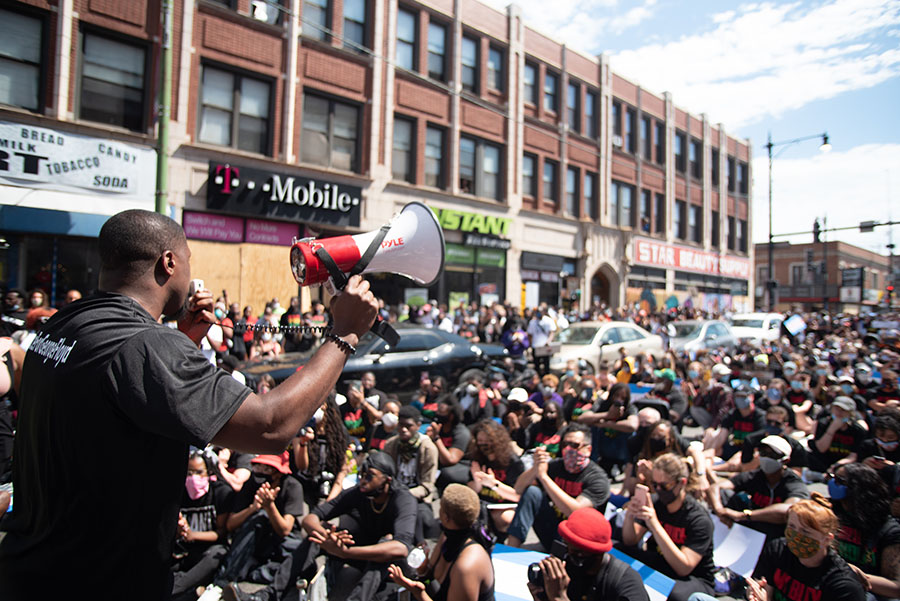
The Chicago Community Trust took that first step in 2020, in the midst of the COVID-19 pandemic, when it launched the Changemakers Network, a platform for resident-led groups to come together, build collective power, and accelerate community-driven change. The Trust provided $1.5 million in general operating grants to 18 community organizations, which are spending two years strategizing ways to advance the issues they care about. These are groups that want to upend the top-down decision-making processes that permeate the social and public sectors, so that under-resourced communities are the architects of their own agendas.
Houston Endowment has taken a different tack. The organization has helped shepherd the creation of an array of community tables, which bring together a loose federation of actors that work on the same issues, such as child welfare, immigration services, public transportation, and domestic violence.
Each of these collaboratives are led by “rock star leaders doing amazing work, and we were worried about burnout,” said Tonyel Edwards, a Houston Endowment program director. To address this concern, Houston Endowment provided funding to hire a cohort facilitator and create some space for those leaders to step away from the day-to-day grind and support one another’s professional development. However, it wasn’t long before the collaboratives’ leaders concluded that they wanted to engage with one another on the issues that matter to their communities.
Few, if any, of the collaboratives’ leaders knew previously about the others’ existence. None shared a common creation story. However, “they are now [working together] because they are connected,” added Edwards. “I think there’s tons of promise. But where they’ll go, I don’t know yet.” Nevertheless, Houston Endowment’s “just-try-it” philosophy at least opens up the opportunity to test whether investing in a group of leaders will make a bigger difference in the lives of community members.
Questions for Reflection and Action
- How might you provide more support to the local organizations in your region most valued by the residents of those communities, particularly those led by BIPOC community members?
- How might you build and strengthen the networks and relationships to reach those communities or fund community-grounded intermediaries to invest on your behalf?
- In what ways might your funding practices better support the efforts of grantees to realize the impact they seek? For example, can you provide more multiyear general operating grants and/or professional services?
- Can you create platforms for grantees to work collectively?
Where Might Race and Place-based Philanthropy Go from Here?
The peer-learning cohort of 12 place-based funders who shared their real-world knowledge across this series of five articles came together during one of the most tumultuous times in modern American history. A pandemic that infected millions of Americans and killed hundreds of thousands. The nation-spanning protests in the wake of George Floyd’s murder. The insurrection at the Capitol. The unavoidable evidence of deep, systemic racism, which once again boiled to the surface.
Through it all, as the peer funders grappled with some of the fundamental questions that confronted so many place-based funders during that time of crisis (and will undoubtedly confront them in the crises yet to come), the participants surfaced dozens of tactics and practices for benefitting many more under-resourced communities. An array of new options, as well as those that are known to at least some other funders, is often what it takes to fuel renewal. Because, as Seattle Foundation’s Kris Hermanns put it, there is no such thing as a one-size-fits-all solution.
“There isn’t ‘an answer,’” said Hermanns. “Especially in a time that feels incredibly hard and raw, it’s really nice to try and find an answer. To have something that you can grasp. What’s helpful with this learning community is that you find your answers based on the wisdom and experience, and even f-bombs that people are willing to share. And you think about how you distill and translate that experience.”
This series is intended to be an entry point in keeping that conversation going. We hope you find something to apply to your work, something to help reframe a problem, or something to share—or even debate—with your colleagues. If you have a practice or insight to extend to the rest of us, please reach out to Debby Bielak, one of this paper’s co-authors ([email protected]). We will use your feedback as we figure out next steps for sharing what we’re learning about how place-based funders are leaning into more effective, more equitable philanthropy.
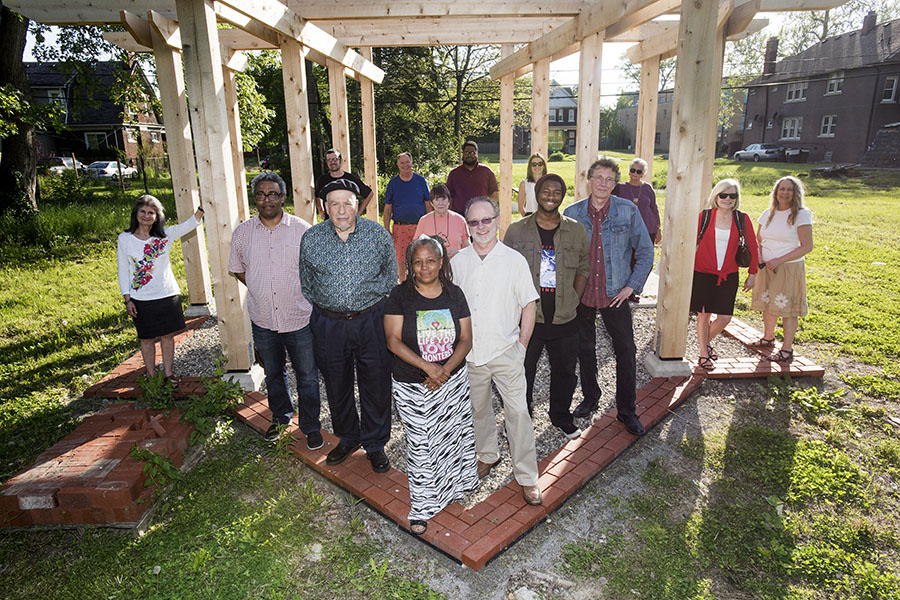
Debby Bielak and Darren Isom are partners in The Bridgespan Group’s San Francisco office. Marion Michieka is a senior associate consultant in the same office. Editorial Director Bill Breen is based in Bridgespan’s Boston office. The authors thank Bridgespan Senior Advisor Nan Stone for her guidance throughout this project.
Notes
[1] Bridgespan is an advisor to MacKenzie Scott and also received a grant among other social sector infrastructure organizations in 2021.

